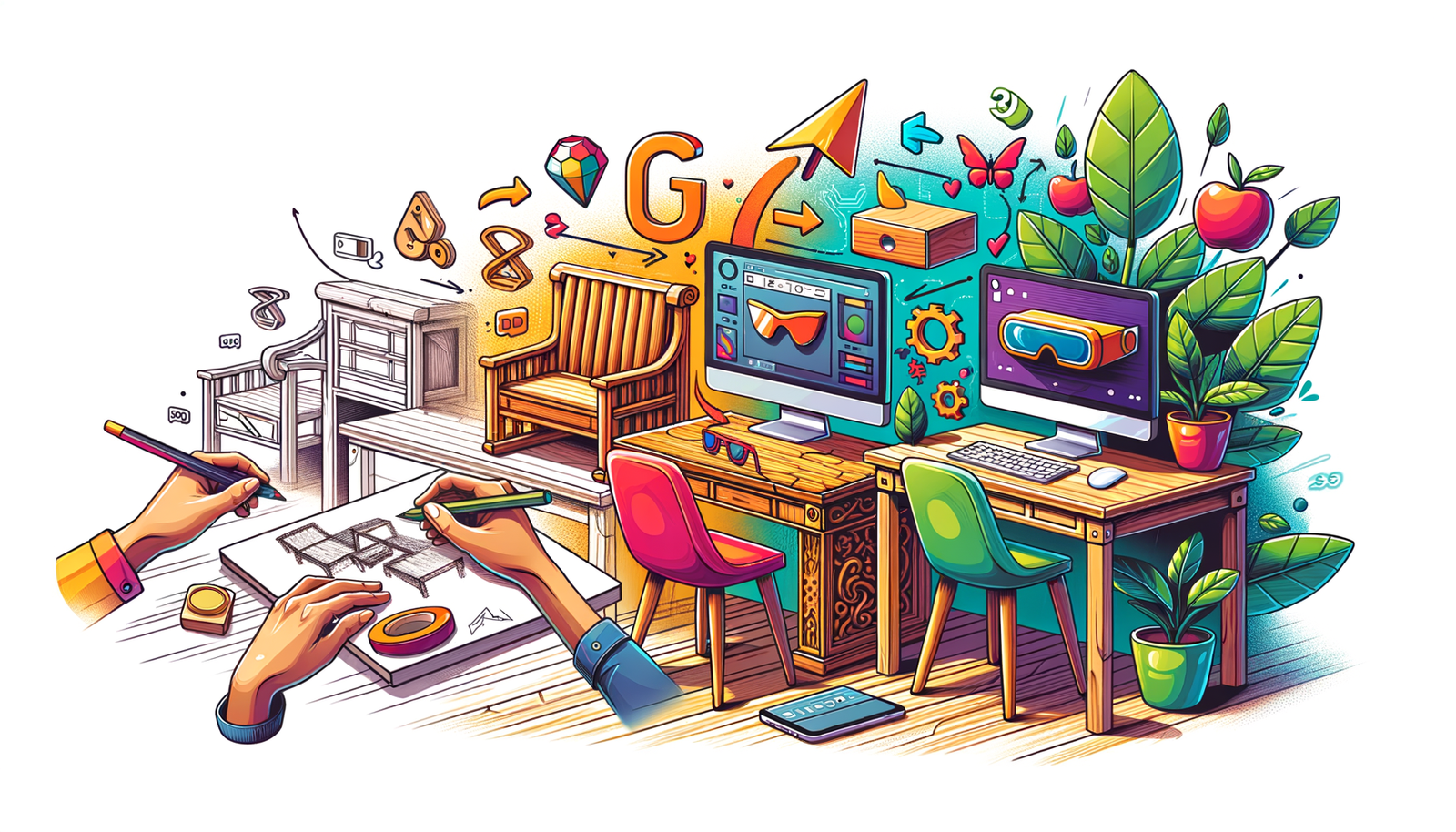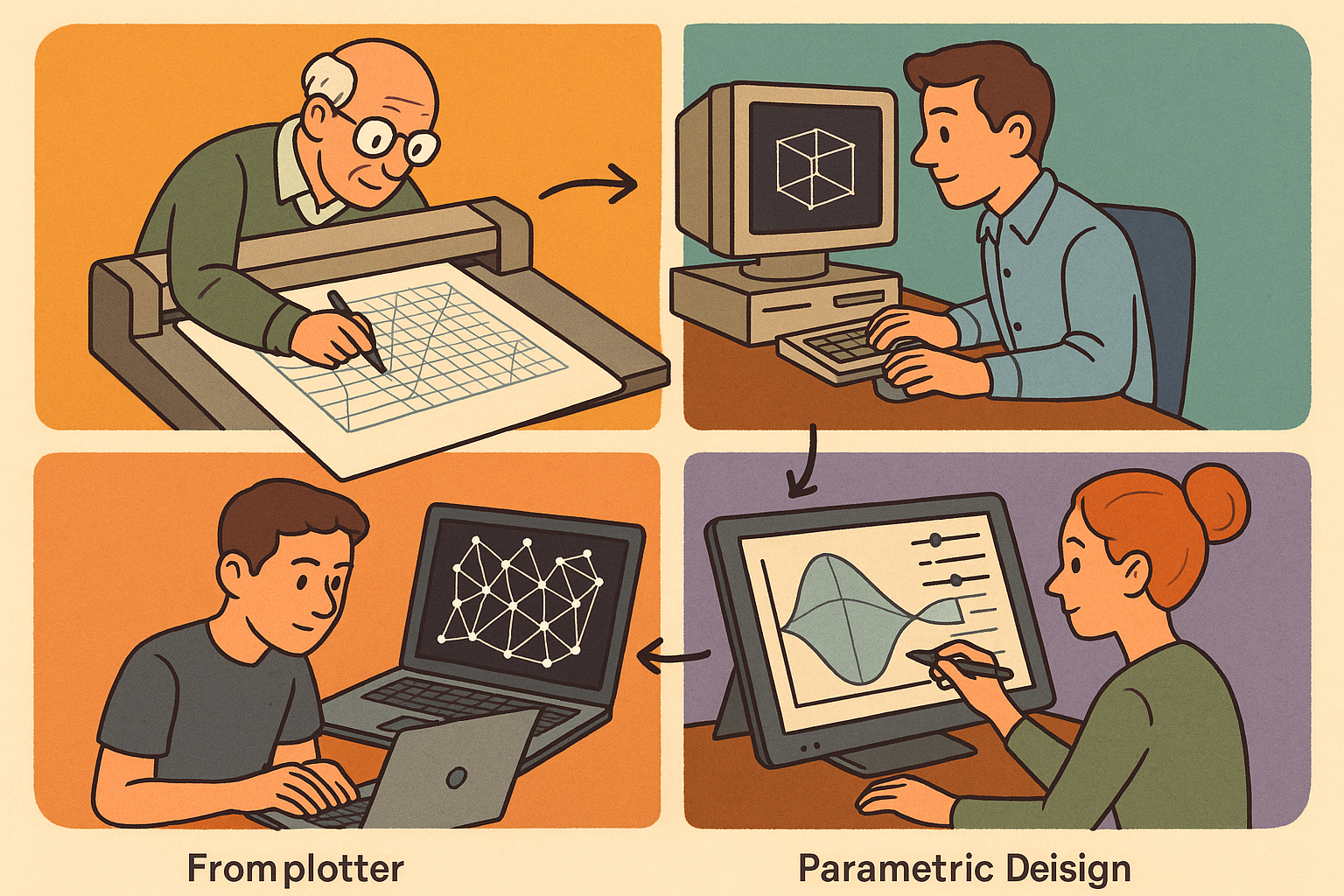Your Cart is Empty
Customer Testimonials
-
"Great customer service. The folks at Novedge were super helpful in navigating a somewhat complicated order including software upgrades and serial numbers in various stages of inactivity. They were friendly and helpful throughout the process.."
Ruben Ruckmark
"Quick & very helpful. We have been using Novedge for years and are very happy with their quick service when we need to make a purchase and excellent support resolving any issues."
Will Woodson
"Scott is the best. He reminds me about subscriptions dates, guides me in the correct direction for updates. He always responds promptly to me. He is literally the reason I continue to work with Novedge and will do so in the future."
Edward Mchugh
"Calvin Lok is “the man”. After my purchase of Sketchup 2021, he called me and provided step-by-step instructions to ease me through difficulties I was having with the setup of my new software."
Mike Borzage
Design Software History: Evolution and Impact of Furniture Design Software: From Hand-Drawn Sketches to AI-Powered Tools
November 13, 2024 4 min read


Introduction
The world of furniture design has undergone a remarkable transformation with the advent of furniture design software. These digital tools have become indispensable, enabling designers to create complex and innovative pieces with unprecedented precision and efficiency. From the early days of furniture crafting, where designs were meticulously hand-drawn, to today's sophisticated software applications, the evolution of design tools has significantly impacted the industry. Key players and technologies have spearheaded this change, pushing the boundaries of what's possible in furniture design and manufacturing.
Historical Context of Furniture Design Software
The transition from traditional design methods to digital tools marked a pivotal moment in the furniture industry. Initially, designers relied heavily on hand-drawn sketches and physical models to conceptualize and communicate their ideas. This process was not only time-consuming but also limited in terms of precision and the ability to easily modify designs. The introduction of early Computer-Aided Design (CAD) tools revolutionized this landscape. Companies like Autodesk, founded by John Walker in 1982, played a crucial role with the release of AutoCAD, one of the first CAD programs that became widely accessible to professionals.
As technology advanced, significant milestones were achieved in the evolution of furniture design software. The launch of SketchUp by @Last Software in 2000 (later acquired by Google in 2006 and then by Trimble Inc. in 2012) made 3D modeling more intuitive and accessible to designers. This period also saw the emergence of specialized furniture design applications that focused on 3D modeling and rendering specific to furniture creation. Software like SolidWorks, developed by Dassault Systèmes, and Rhino by Robert McNeel & Associates offered advanced tools that catered to the nuanced needs of furniture designers, allowing for more complex and customizable design work.
Core Technologies and Features in Furniture Design Software
Modern furniture design software is characterized by essential features that have become standard in the industry. These include 3D modeling, which allows designers to create and manipulate three-dimensional representations of their concepts. Parametric design is another critical feature, enabling designers to define key parameters and constraints that the design must adhere to, thus allowing for easy adjustments and scalability. High-quality rendering capabilities are also essential, providing realistic visualizations of the final product before it goes into production.
The underlying technologies that power these features are rooted in advanced geometric modeling techniques. Computational geometry and algorithms developed by mathematicians and computer scientists enable the precise calculation and representation of complex shapes and forms. Furthermore, the integration of virtual reality (VR) and augmented reality (AR) has begun to transform how designers visualize their creations. VR and AR technologies allow for immersive experiences, letting designers and clients walk through virtual spaces furnished with their designs, thereby enhancing the design review and approval process.
- Key Features of Modern Furniture Design Software:
- 3D Modeling for creating detailed design representations.
- Parametric Design to adjust design parameters efficiently.
- Rendering for high-quality visual outputs.
- Underlying Technologies:
- Geometric Modeling Techniques for precise shape creation.
- Virtual and Augmented Reality for immersive visualization.
Current Trends and Future Directions
In recent years, there has been a significant emphasis on the integration of sustainable design practices within furniture design software. Environmental concerns have prompted developers to include features that help designers assess the environmental impact of their materials and processes. Software now often includes databases of eco-friendly materials and life-cycle assessment tools to promote sustainability.
The rise of collaborative platforms and cloud-based solutions has also reshaped how designers work. Platforms like Autodesk's Fusion 360 have embraced cloud technology, allowing for real-time collaboration among teams dispersed across different locations. This shift facilitates greater teamwork and accelerates the design process, as updates and changes can be made and seen by all parties instantaneously.
The influence of Artificial Intelligence (AI) and machine learning is increasingly apparent in automating design processes. AI algorithms can now assist in generating design options, optimizing materials usage, and predicting manufacturing challenges. For instance, generative design tools powered by AI can produce multiple design variations based on specified parameters, enabling designers to explore a wider range of possibilities.
Looking ahead, predictions for future technological advancements in furniture design software include the further integration of AI, more immersive VR/AR experiences, and enhanced customization capabilities. The continuous development of these technologies promises to make design processes more efficient, creative, and responsive to both market trends and individual client needs.
Conclusion
The impact of technology on furniture design has been profound, revolutionizing the way designers conceptualize, develop, and realize their creations. From the initial shift from hand-drawn sketches to sophisticated digital tools, technology has not only increased efficiency but also expanded the creative horizons for designers. These tools have transformed the industry by enabling more complex designs, facilitating better collaboration, and improving the overall quality and sustainability of furniture products.
Designers now play a more dynamic role, balancing traditional craftsmanship with technological proficiency. The fusion of creative skill and technological capability has become essential, as designers must navigate advanced software to bring their visions to life. This evolution has also democratized design, allowing emerging designers access to professional-grade tools that were once restricted to larger firms with substantial resources.
As we look to the future, the ongoing evolution of furniture design software promises even greater innovation. The continued development of AI, VR/AR, and cloud-based technologies will further transform the industry, offering new tools and methods for designers to explore. Ultimately, these advancements will contribute to a more efficient, sustainable, and imaginative furniture design landscape, reflecting the ever-changing needs and desires of society.
Also in Design News

Design Software History: From Plotters to Procedural Intent: A Technical History of Generative and Parametric Design Software
January 04, 2026 13 min read
Read More
Semantic Meshes: Enabling Analytics-Ready Geometry for Digital Twins
January 04, 2026 12 min read
Read MoreSubscribe
Sign up to get the latest on sales, new releases and more …



